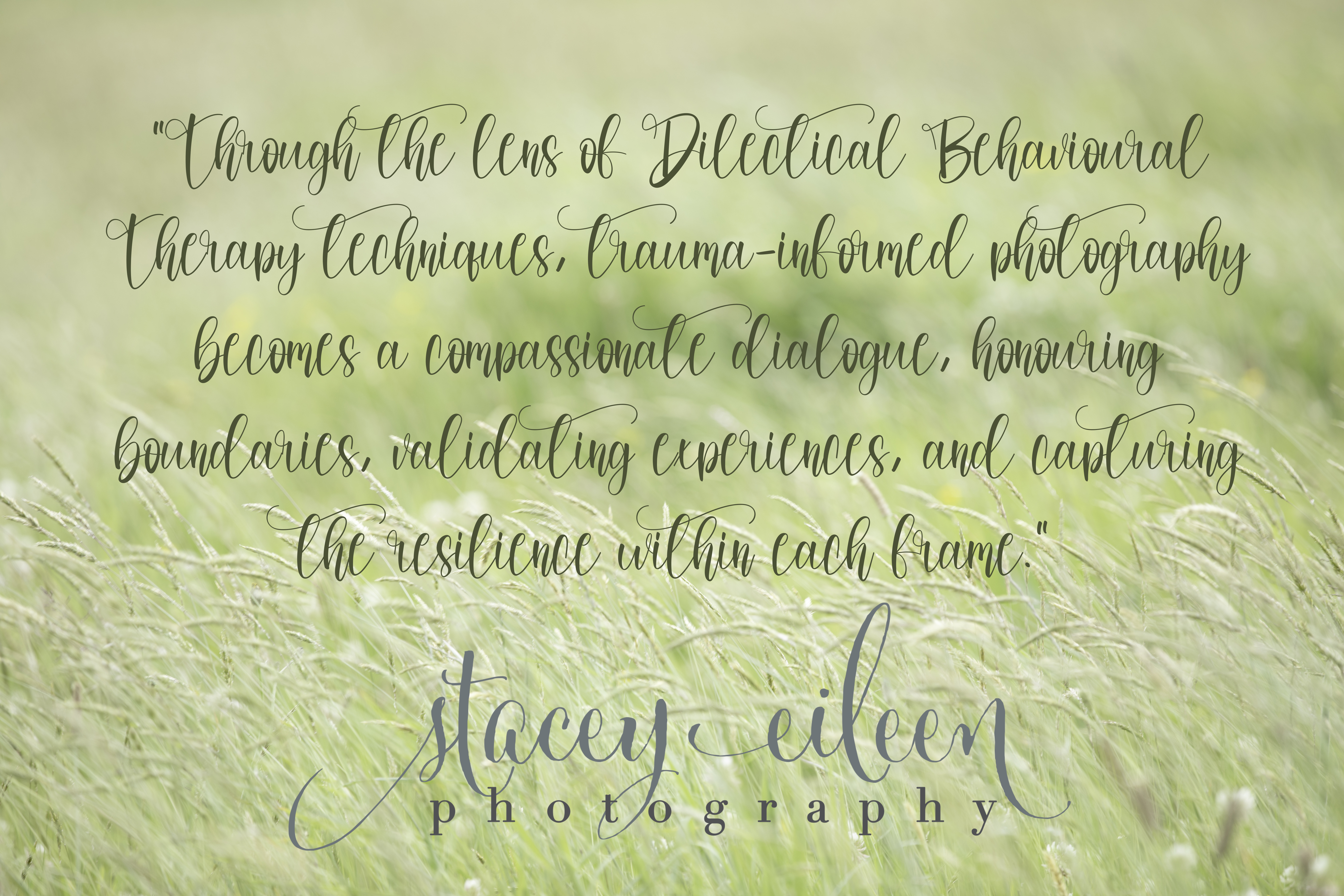Blog
Welcome

Recent posts
- Silhouette in Tulle: Capturing the Strength and Vulnerability of Pregnancy in Maternity Photography
- Preserving Memories: The Timeless Value of Professional Prints
- Capturing the Magic: Behind the Scenes of a Stunning Maternity Shoot
- Celebrating Motherhood: The Empowering Essence of Maternity Photography
- Empowering Through the Lens: Utilizing DBT Techniques for Trauma-Informed Photography
Categories


loading...


Dialectical Behavior Therapy (DBT) is a therapeutic approach that combines cognitive-behavioral techniques with concepts of acceptance and mindfulness. While traditionally used in mental health settings, the principles of DBT can also be applied to various creative endeavors, including trauma-informed photography. In this blog post, we'll explore how photographers can incorporate DBT techniques to create a safe and empowering space for trauma survivors.
- Mindfulness in the Moment:
DBT places a significant emphasis on mindfulness, encouraging individuals to stay present and aware in the moment. In trauma-informed photography, this translates to creating an environment where both the photographer and the subject are fully engaged in the process. Before starting a session, practice mindfulness techniques to ground yourself, and encourage your subjects to be present. This helps build a connection and ensures that the photography session is a collaborative and mindful experience.
- Validation and Affirmation:
Validation is a key component of DBT, acknowledging and accepting the experiences and emotions of others without judgment. In trauma-informed photography, validation can be expressed through verbal affirmations and by respecting the boundaries and comfort levels of your subjects. Before, during, and after the session, communicate openly, expressing empathy and understanding. This fosters a sense of safety and validation for individuals who may have experienced trauma.
- Radical Acceptance:
Radical acceptance is another core concept in DBT, encouraging individuals to accept things as they are rather than fighting against them. In the context of trauma-informed photography, this means recognizing and respecting the unique perspectives and stories of your subjects. Instead of imposing preconceived ideas, allow the individuals to guide the narrative, capturing their authentic experiences and expressions.
- Emotion Regulation:
DBT includes strategies for emotion regulation, teaching individuals how to manage intense emotions effectively. As a trauma-informed photographer, understanding these principles can help you navigate potential emotional triggers for your subjects. Be attuned to their cues, offer breaks when needed, and create a space where emotions are acknowledged and respected. This contributes to a more positive and empowering photography experience.
- Interpersonal Effectiveness:
DBT emphasizes effective communication and interpersonal skills. Apply these principles in your interactions with trauma survivors by being transparent, setting clear expectations, and obtaining informed consent. Create a collaborative environment where the subject feels heard and empowered, ensuring that the final images reflect their unique narrative and strength.
Conclusion:
Trauma-informed photography is not just about capturing images; it's about creating a space for healing, empowerment, and self-expression. By incorporating DBT techniques, photographers can enhance their ability to connect with trauma survivors in a respectful and mindful manner. Through the lens of DBT, each photography session becomes an opportunity for validation, acceptance, and empowerment, contributing to the broader narrative of resilience and healing. As photographers, embracing these principles can transform not only the images we capture but also the lives and experiences of those we photograph.

